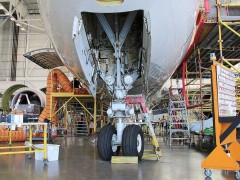Indian carrier SpiceJet has received its first batch of overhauled engines from StandardAero, marking a pivotal moment in its ongoing MRO strategy to bring grounded aircraft back into service.
SpiceJet has committed to overhauling 17 engines, including six CFM International Leap-1Bs and seven Pratt & Whitney Canada PW150A engines via StandardAero, and four additional engines with Carlyle Aviation. StandardAero overhauled the engines at its Houston and Singapore facilities. Further engine deliveries are expected in a staggered schedule over the coming months.
One of SpiceJet’s Boeing 737NGs has already re-entered service following the engine swap, underscoring the airline’s ability to rapidly transition overhauled assets into operational status. once the next batch of engines is received and installed, another round of reactivations is expected imminently.
Overhaul of engines such as the Leap-1B is technically demanding, involving inspection and repair of high-pressure turbine modules, fan blade balancing, hot section refurbishment and full testing to OEM specifications. The Leap’s advanced composite materials and tighter clearances require deep technical expertise and real-time coordination between airline engineering teams and overhaul providers.
Typical overhauls of PW150A engines, which power Bombardier Q400 turboprops, include gearbox inspections, propeller governor calibration and combustion chamber refurbishment.
The re-induction of overhauled engines allows SpiceJet to restart airworthiness clock cycles, re-establish maintenance predictability through updated power-by-the-hour projections and better align A check and C check planning across its fleet.
This engine overhaul campaign reflects SpiceJet’s phased MRO-led recovery model, which contrasts with broader fleet expansion seen across other LCCs in the region. By focusing on engine restoration before airframe scaling, the airline is prioritizing technical reliability and asset optimization over aggressive fleet growth.
Moreover, the use of international engine shops, as opposed to domestic overhaul bases, highlights ongoing limitations within India’s own engine MRO infrastructure, particularly for newer-generation engines like the Leap. This may spark further conversation on the need for localized engine overhaul capabilities under India’s MRO policy reforms and incentives.
WeChat OA
Aviation Seller

Scan to Follow




